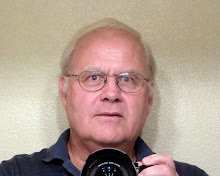A Blue Angels flight demonstration exhibits choreographed refinements of skills possessed by all naval aviators. The Blue Angels’ C-130, affectionately known as Fat Albert, begins each demonstration by exhibiting its maximum performance capabilities during a ten-minute performance. Shortly thereafter, you will see the graceful aerobatic maneuvers of the four-jet Diamond Formation, in concert with the fast-paced, high-performance maneuvers of its two Solo pilots. Finally, the team illustrates the pinnacle of precision flying, performing maneuvers locked as a unit in the renowned, six-jet Delta Formation.
The team is stationed at Forrest Sherman Field, Naval Air Station Pensacola, Florida, during the show season. However, the squadron spends January through March training pilots and new team members at Naval Air Facility El Centro, California.
A member of the United States Army Parachute Team, The Golden Knights, presents the colors from on high.
In 1959 13 men joined together to form the Strategic Army Corps Sport Parachute Team, to compete in the then communist dominated sport of skydiving. The team performed so well that on June 1, 1961 the Army officially recognized, designated and activated the team as the U.S. Army Parachute Team.
For 50 years the “Golden Knights” have been wowing audiences at air shows, competitions and most recently, with high profile tandems.
The two demonstration teams travel all over the country performing aerial demonstrations at air shows and special events in support of Army recruiting goals.
The two competition teams travel, competing nationally and internationally at various skydiving competitions, continuously bringing home gold, silver and bronze medals. They are the most successful U.S. Department of Defense sports team.
The Golden Knights not only perform at air shows, compete on an international level and perform high profile tandems they also visit high schools and work with local recruiters showing young adults what type of opportunities the Army has for them.
| ||
| . |
 |
| Blue Angels in slow flight and nose high attitude. |
 |
| Replica Japanese Zero |
TORA 101, the Wichita based Japanese Zero Fighter Replica, was actually built in 1952 by the Canadian Car & Foundry Company. The Royal Canadian Air Force accepted it as a Harvard MKIV advanced trainer on 1/14/53 as aircraft 20473.
20473 was the seventh from the last Harvard made for the RCAF, and was first based with the First Flight Training Squadron in Penhold, Alberta, Canada, then at Centralia, Ontario. After 6000 flying hours, on 2/2/68 it was released through the Crown Asset Disposition Center.
Twentieth Century Fox Studios purchased the plane in 1968, along with 50 other Harvards, AT6 Texans, and Consolidated BT13's. These were highly modified and transformed into Zero fighters, Val dive bombers, and Kate torpedo bomber replicas for their movie, TORA! TORA! TORA! This movie accurately recreated the Japanese attack on Pearl Harbor on December 7, 1941. No expense was spared: in fact, the studio spent more than the Japanese did on the actual raid!
So TORA 101 and its other "costars" were transformed into the pride of the Imperial Japanese Navy, TORA 101 was used extensively, painted with various tail markings, such as AI-127, and then with no tail markings. It flew at the El Toro Naval Air Station, off of the American aircraft carrier "Yorktown," and at Barbers Point and Ford Island in Hawaii.
After the movie, TORA 101 was purchased in 1972 by Challenge Publications.
TORA 101 tail markings were repainted to what at that time was thought to be
Lt. Cdr. Shigeru Itaya's aircraft "AI-101" (carrier: AKAGI, Zero 101). Itaya was
Hikotaicho, overall Fighter Group Lead, heading the first wave of Zeros in the
Pearl Harbor attack.
More recent research uncovered that Itaya actually flew Zero AI-159. Photographs taken by the Japanese show that on the day of the Pearl Harbor attack, AI-101 was flown by P01C Tadao Kimura, wingman for Lt. Saburo Shindo, second wave Buntaicho, Zero Group Lead.
Kimura and Shindo were of the few Japanese who took part at Pearl Harbor to survive the war, while Itaya was killed in 1944. Kimura died a few years ago in Osaka Japan, while Shindo lives in Hiroshima City.
After three more owners, TORA 101 was given in 1979 to the Experimental Aircraft Association, with Gus Limbach as the primary pilot. At the EAA, they swapped the existing nongeared engine and two bladed propeller to a geared engine with three bladed propeller. The more realistic looking engine and propeller combination came from the other TORA Zero that the EAA had at the time, tail number -147.
J and R Investments purchased TORA 101 in July, 1992. An extensive nine month
long avionics and systems upgrade cost over $40,000. In July 1995, Doug Jackson, partner in J and R, purchased the plane outright. TORA 101 is flown and displayed at 20+ airshows and events each year, being shown to well over two million people each season.
 |
| Jump plane for the US Army Golden Knights |
World War II B-17 Bomber, Voight F4U-5 Corsair and a Replica Japanese Mitsubishi Zero.






No comments:
Post a Comment